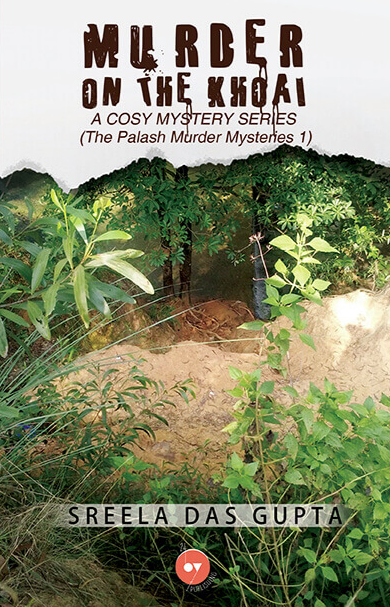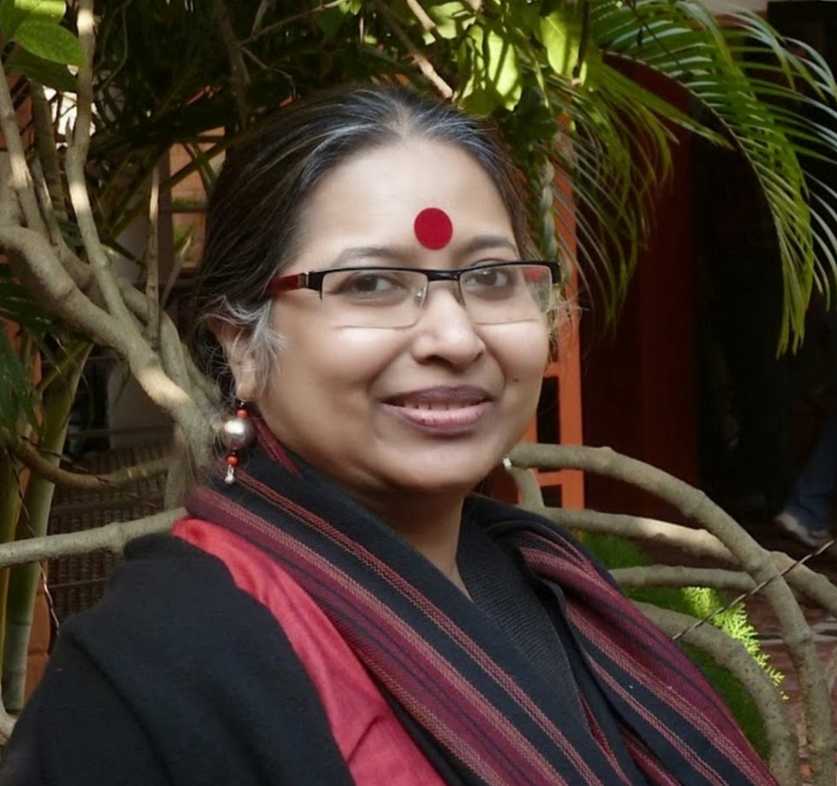Murder on the Khoai: The Palash Murder Mysteries
Sreela Das Gupta
Published by 25by7Publishing.com
Price Rs 200
Pg 200
Surely, Bongs, or Bengalis, they will love this ‘Cosy Mystery Series’. Surely, they have had their fill of Feluda by Satyajit Ray and Byomkesh Bakshi as ace detectives in typically old Calcutta or Bengal backdrops. However, they will now have a feisty female protagonist: Mrinalini Gupta. Surely, not only Bongs, but all those who love a murder mystery unravel across pages of tense suspense, especially in smoggy, foggy winter nights, would love this thin debut thriller by Sreela Das Gupta.
Sreela also writes sublime and lucid love and erotic poetry. Some of her poetry books are being widely read. Her love poems are popular in social media. A former and brilliant JNU scholar with a big heart with an expanse of eternal magnanimity, a woman’s activist who worked for years in the dusty terrains and rural interiors of Rajasthan, she was granted the Hubert H Humphrey Fellowship of the US Congress to study at the Tulane School of Public Health. After a long stint in JNU, Rajasthan and Delhi, she has gone to back to her retreat and refuge: Kolkata, Santiniketan, Bengal.

Uncannily, and I am not so sure about it, but amateur detective Mrinalini Gupta in the book also looks and sounds like her, even while she has a large whiskey with or without water, or cooks assorted cakes smelling of rose petals, rum, red wine, and archival British heritage of the Bhadraloks. A half-retired consultant, her ears glued to the faintest offbeat sound and her eyes eternally searching for the odd amidst the even, including a familiar afternoon song written by Rabindranath Tagore, Mrinalini Gupta has left her ambitious and rapid pace corporate job.
She has predictably withdrawn to what is predictably the Bengali utopia post-retirement: Tagore’s Santiniketan, near Bolpur, with its lush green forests and river Ajoy flowing close by, its idyllic and laid-back retreat and solitude, and its deep anthropological linkages with the great tribal traditions and cultures of Santhals and others in neighbourhood.
Besides, there are old love affairs, unrequited stories of desire and longing, displacement and exile, hidden letters and revenge stories, and a mother who has not forgotten her old flame, a former top cricketer.
Sreela lives in Santiniketan these days, that is, when she is not able to overcome the Kolkata temptation. The lovely detective mystery thereby is as cosy as a ‘bhoot’ story in a Bengali middle-class drawing room, with a benevolent portrait of Tagore in white looking at all and sundry from the wall, his music floating in the distance, the fish with mustard being cooked in the kitchen.
Indeed, a murder in the backdrop of Santiniketan just can’t be imagined. But they happen, one by one, with all the diabolical drama thrown in, not one murder, but three, one by one, rocking the eternal peace of the peaceful landscape in forever retreat, pushing everyone on the edge, with not one iota of evidence to chase or identify the murderer, with an entire social collective in suspicion and fear of each other, even when they are rocking on music in an upper-end party thrown by super-rich NRI Bengalis and their sexy daughter who drop by once in a while looking for their forgotten roots. Meanwhile, there are faint and overt love affairs, a little seduction story here and there, and a tribal arrow which almost targets the female detective, while she rides her favourite vehicle with her favourite driver – not a super-tech bike like that of batman, but an old-style rickshaw in the bylanes of Santiniketan.
There are cops, a retired cop, a quietly nuanced lover cop – they all know Mrinalini Gupta and respect her. There is a ‘fishmonger’ who comes with fish to your doorstep, so typical of Bengali neighbourhood, though daily haggling and nitpicking is almost a spiritual exercise. There are cakes being baked and mocktails and cocktails followed by tribal music and dance, while sinister minds plot another sinister murder. There are no Lily Arrowroot Marie Biscuits as in every Bengali middle-class household in the morning. Our female protagonist with her corporate past likes her “Green Tea – Earl Grey… infusion steeping in the pot, my cream cracker biscuits laid out – waiting for the newspaper to complete the ritual…”
I hope she enjoys her large whisky on the rocks, next to a shimmering fireplace, as the fog envelopes her snowed-in house, the glass on the window becoming moist with evening dew, while the murderer looms in the vicinity, camouflaged in the wintery shadows, looking for his next victim. Slowly, whistling in the dark.
There are assorted and interesting characters: Mini di, Tara –who taught music at the university –Shyamlal, Chandan, Kaluda, Ramlal, Jagannath, Manavda, Munia, Itu, Jaya, old aunt, fondly called JJ. There is also a Deer Park where the first body is found, smashed into pulp, with no forensic evidence worth its salt on the site and no motive whatsoever. No one even knows who is the dead man.
Besides, there are old love affairs, unrequited stories of desire and longing, displacement and exile, hidden letters and revenge stories, and a mother who has not forgotten her old flame, a former top cricketer. Former cop Manavda, takes notes, asks questions, as he shares a special cake cooked for him by Mrinalini Gupta. She takes mental notes. But she is found out. She is almost killed by an arrow stolen from a tribal arsenal.

Another body is found. Followed by another murder. The mystery deepens. There are no threads, nor clues. Tagore’s Santiniketan suddenly becomes the site of a PD James murder mystery, without the great literary flourish.
Sreela does not waste words. She is too economical. She has no time for literary flourish. Her cosy murder series is to the point, simple and precise, almost like a childhood story in a textbook. However, the flavours lie in the nuances, the crevices, the hidden smells, and corners, in the memories, the unexpected twists and turns. Even as a Tagore song arrives from the blue as a clue, and the fish is as delicious as it can be in the land of Tagore.
Sreela lives in Santiniketan these days, that is, when she is not able to overcome the Kolkata temptation. The lovely detective mystery thereby is as cosy as a ‘bhoot’ storyin a Bengali middle class drawing room, with a benevolent portrait of Tagore in white looking at all and sundry from the wall, his music floating in the distance, the fish with mustard being cooked in the kitchen.
Her next novel, perhaps, is located with the backdrop of sublime Shimla in Himachal Pradesh, with its pristine backdrop, very near the old cottage uphill towards Baluganj where Tagore stayed, and the isolated Indian Institute of Advanced Study, with its wooden floors, colonial architecture, gardens of flowers and unmatched beauty disappearing in the winter fog.
Next stop for Mrinalini Gupta. I hope she enjoys her large whisky on the rocks, next to a simmering and shimmering fireplace, as the foggy fog envelopes her snowed-in house, the glass on the window becoming moist with evening dew, while the murderer looms in the vicinity, camouflaged in the wintery shadows, looking for his next victim. Slowly, whistling in the dark. An old Tagore tune, perhaps.